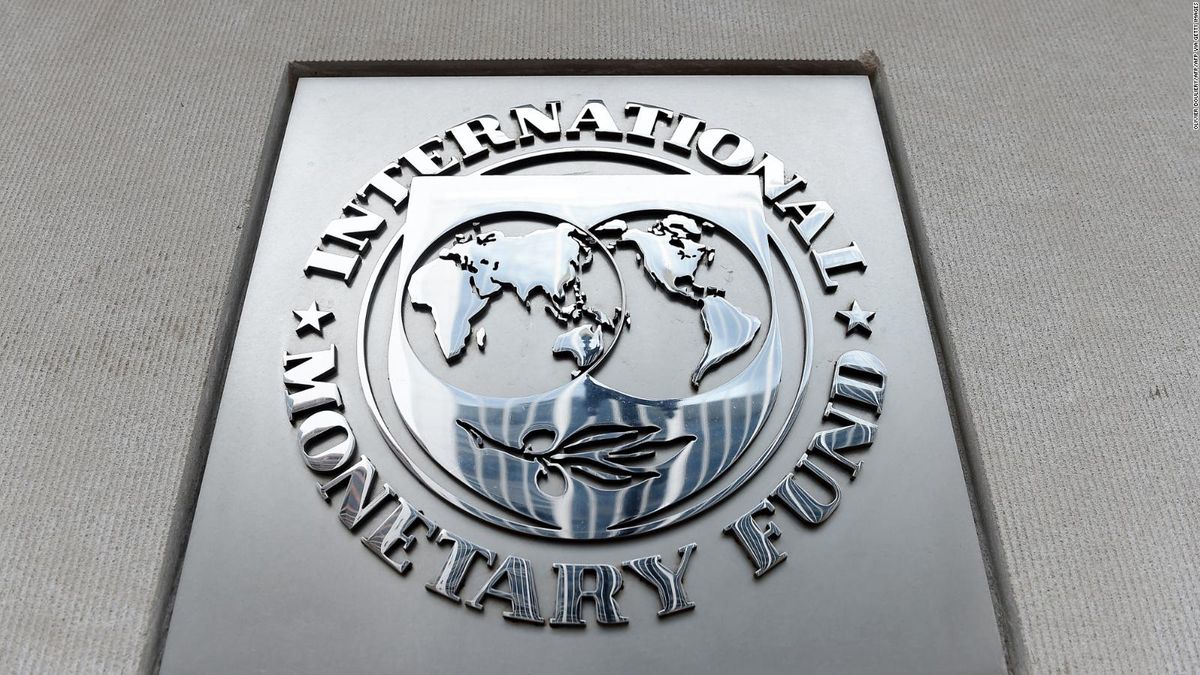As the year progressed, the IMF was correcting upwards its projections for an increase in Argentine GDP, since it went from estimating an expansion from 5.8% in April to 6.4% in July and now reaches 7.5%, a variation somewhat less than that estimated by the Government, which projects 8%.
The Fund also marginally improved the growth outlook for 2022, which went from 2.4% in the July estimate, to 2.5% in the last report.
After the collapse of 9.9% of the activity registered last year, in the midst of the health crisis unleashed by Covid, if the IMF’s forecasts were fulfilled, the Argentine economy would anyway it would not be able to recover the pre-pandemic level by the end of 2022 (it would be 0.7% below).
Along with increased economic activity, it is estimated that reduce the Cup of unemployment in the country that would fall from 11.6% last year to 10% in the present and 9.2% in 2022.
It also considers that it will continue to be favorable the result of the current account of the balance of payments, which would reach the equivalent of 1% of GDP in the year ongoing and 0.8% next.
No inflation
The report does not include inflation projections for Argentina. It is clarified that they were excluded because “to a great extent they are subject to the negotiations of the program (to be agreed with the IMF) that are still pending.”
Regarding the main markets to which Argentina exports, the Fund projects high growth rates for the current year.
It is the case of Brazil, which would expand 5,2% this year, although it would slow down its pace of activity to 1.5% in 2022. Another is China, with an increase rate of 8% by 2021, but also with a considerable decline for 2022 when it would grow by 5.6%.
Deceleration
“The global recovery continues but momentum has weakened” holds Gita Gopinath, the chief economist of the agency.
The IMF projects that the global economy will grow 5.9% in 2021 (0.1 percentage points less than expected in last July’s report), but maintained its forecast of a 4.9% rise by 2022.
The downward revision for the current year is a consequence of the expected less dynamism in growth in advanced economies, partly due to interruptions in supply chains.
Developing and low-income countries were also affected, largely due to the worsening pandemic. In counterpart, they improved the prospects of short term for some raw material exporting countries.
Beyond 2022, For the medium term, the Fund projects world growth to moderate to around 3.3% per year. Less optimistic is with the Argentinaas it expects an increase in 1,8%.
While the report expects advanced nations to regain pre-pandemic growth trends – particularly due to policies to support the economy – the process will be slower in emerging and developing countries due to delays in vaccination processes and lower stimuli.
Precisely, the IMF’s proposal is to vaccinate at least 40% of the population in all countries by the end of 2021 and 70% by the middle of next year.
“The dangerous divergence between the economic prospects of different countries remains a major concern” Gopinath holds. For the advanced economies as a whole, it is expected that they will recover the pre-pandemic growth trend next year and that by 2024 they will exceed it by 0.9%.
In contrast, the forecast for emerging and developing countries (excluding China) is to remain 5.5% below the pre-pandemic forecasts in 2023, “Causing a major setback for improvements in living standards”.
Disparity
These economic divergences are the consequence of large disparities in access to vaccines and in support for policies, according to the economist.
While almost 60% of the population in advanced economies are fully vaccinated and some are now receiving booster injections, about 96% of the population in low-income countries remain unvaccinated.
In this context, the highest political priority is seen as vaccinating an adequate number of people in all countries and preventing more virulent virus mutations.
“If Covid-19 had a prolonged impact in the medium term, it could reduce the global GDP by 5.3 trillion dollars accumulated over the next five years in relation to our current projection ”estimates Gopinath. In this regard, he argues that “the world community must redouble its efforts to guarantee equitable access to vaccines for all countries, overcome vaccine vacillation where there is enough supply and ensure better economic prospects for all.”
Inflation
After noting that “Inflation scares”Due to the acceleration registered in different countries, the Fund expects that rates in developed countries will moderate towards the middle of next year.
Annual inflation in advanced economies will peak at 3.6% on average in the last months of this year, will return at a rate of 2% in the first half of 2022, in other words, a level in line with the objectives of central banks.
For emerging markets faster increase expected, reaching an average annual inflation of 6.8%, and then decrease to 4%.
However, he warns that central banks “must be prepared to act quickly if the recovery strengthens faster than expected or if the risks of rising inflation expectations become tangible.”
Another priority raised by Gopinath refers to mitigating the effects of climate change. In this regard, consider that “Stronger concrete commitments are needed at the next United Nations Conference on Climate Change (COP26) ”.
This implies a minimum carbon price adjusted to the circumstances of each country, green public investment, research, subsidies and compensatory transfers directed to households to help advance the energy transition in an equitable way. It also believes that countries must fulfill their previous promises to mobilize 100 billion dollars of climate finance for developing nations per year.
FMI.png
David William is a talented author who has made a name for himself in the world of writing. He is a professional author who writes on a wide range of topics, from general interest to opinion news. David is currently working as a writer at 24 hours worlds where he brings his unique perspective and in-depth research to his articles, making them both informative and engaging.



